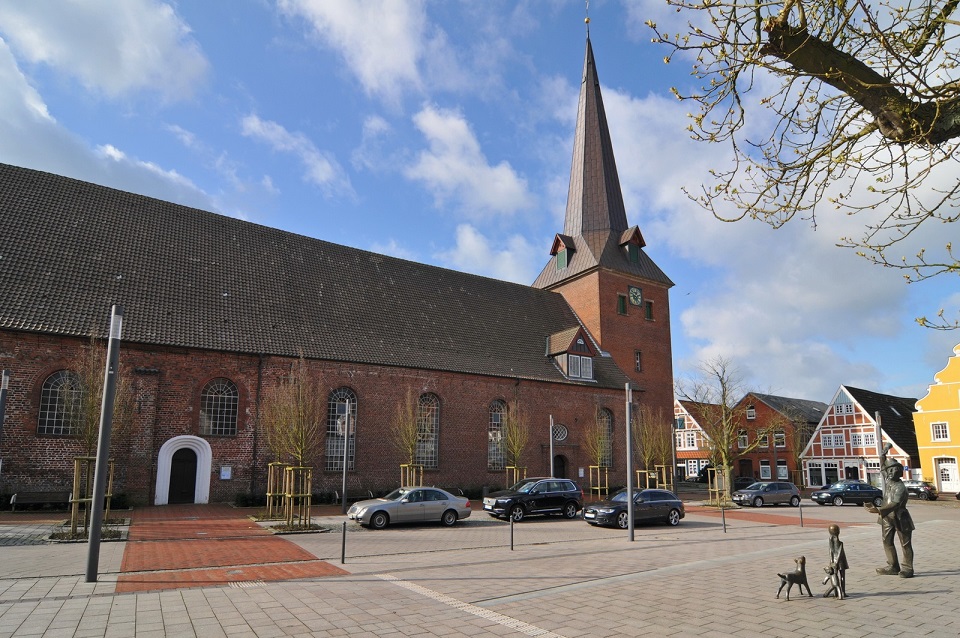Welcome to the audio tour through our historic town Otterndorf. 9th grade students from the local school Gymnasium Otterndorf have translated and recorded the English version of the tour for you.
In the beginning, there was the sea. She determined the life at the coast. The people who lived near the coast provided for themselves with cattle breeding, hunting and fishing. They couldn´t do much agriculture because there weren’t any dikes to protect the fields from floods. The only protection which the inhabitants had at the time were hills heaped up with stones and earthwork: “Wurten” or “Warften“.
In medieval times, the people built their most important building on the highest “Wurt“ : the church. As you can see in the town centre of Otterndorf, the St. Severi Church stands on a centuries-old and 6 ½ meter high mount or „Wurt“.
The place is very well-chosen because it is not far from the coast and at the foot of „Wurt“ there is the Medem. The first church in Otterndorf must have been made of wood, but at the end of the 12th centuries it was reconstructed out of stone. You can still see some parts of this today. The church steeple does not belong to one of these parts. The tower was made in 1807 because the predecessors had started to lean and become dilapidated.
As soon as the first dikes were created to protect the fields behind them, the farmers in Hadeln became very wealthy because of the fertile marsh land. Moreover, the people were very independent despite officially belonging to the duchy of Saxe-Lauenburg. The church community at that time had their own constitution and they held the lower jurisdiction independently.
These things also didn´t change when the consequences of Reformation in 1526 came to Otterndorf and Otterndorf turned into the ecclesiastical centre of all of Hadeln. You can see the local wealth and self-confidence mirrored in the church building. On the one hand because of the size of the church, which is why it is also called “Bauerndom“ or “farmer’s cathedral” and on the other hand because of the abundant equipment.
The church was completely renovated in the 16th and 17th century. That´s why the organ, the altar and the galleries are in the Baroque style. The pulpit gallery is very impressive with the carved figures and with the statue of Moses underneath it. The pulpit gallery seems to be resting on the statue and Moses is holding stone tablets with the 10 commandments in his hands.
An interesting detail is that the dukes of Sachsen-Lauenburg had their own ruler's gallery although they probably rarely attended church services at St. Severi church.
